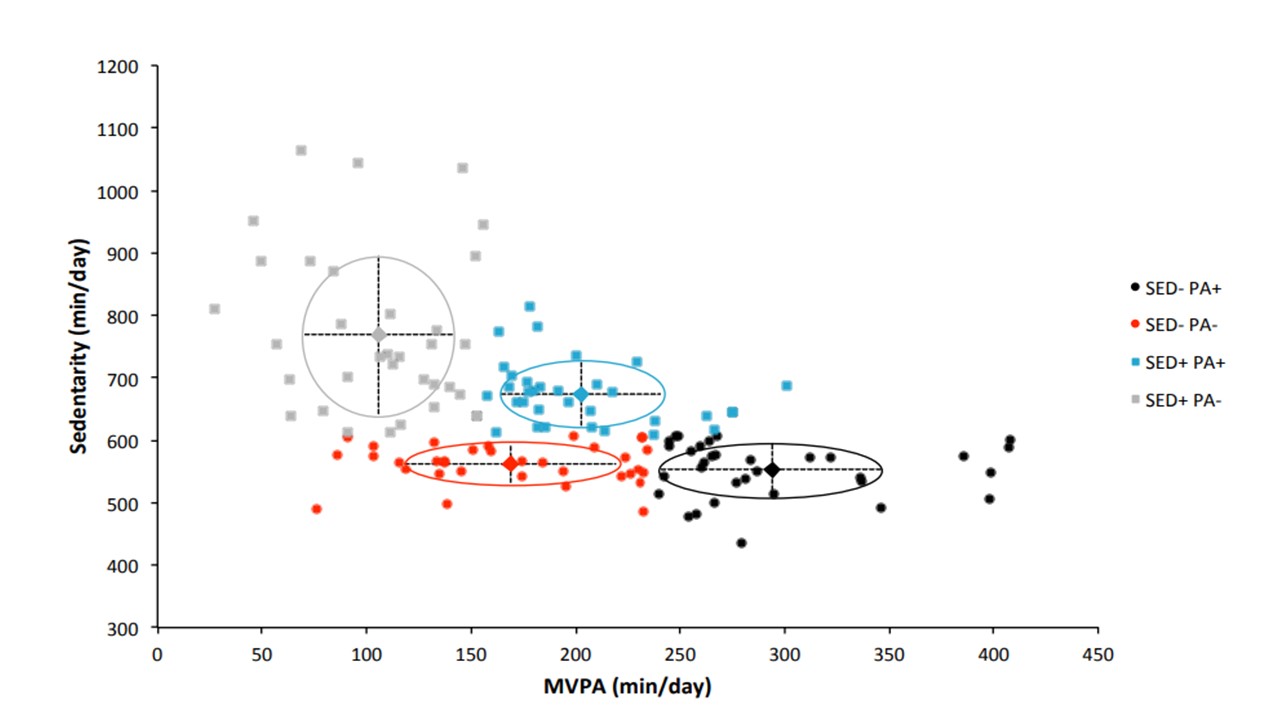Nouvelle Publication Internationale - Julian et al., 2022

Nouvelle publication Internationale de Valerie Julian, Bruno Pereira (CHU Clermont-Ferrand) et David Thivel (Programme A): "Sedentary time has a stronger impact on metabolic health than moderate to vigorous physical activity in adolescents with obesity: a cross-sectional analysis of the Beta-JUDO study" Pediatric Obesity, 2022
Background
Relationships between movement-related behaviours and metabolic health remain underexplored in adolescents with obesity.
Objectives
To compare profiles of sedentary time (more sedentary, SED+ vs. less sedentary, SED−), moderate to vigorous physical activity (MVPA) time (more active, MVPA+ vs. less active, MVPA−) and combinations of behaviours (SED−/MVPA+, SED−/MVPA−, SED+/MVPA+, SED+/MVPA−) in regard to metabolic health.
Methods
One hundred and thirty-four subjects (mean age 13.4 ± 2.2 yrs, mean body mass index [BMI] 98.9 ± 0.7 percentile, 48.5% females) underwent 24 h/7 day accelerometry, anthropometric, body composition, blood pressure (BP), lipid profile and insulin resistance (IR) assessments.
Results
Metabolic health was better in SED− [lower fat mass (FM) percentage (p < 0.05), blood pressure (BP) (p < 0.05), homeostasis model assessment of insulin resistance (HOMA-IR) (p < 0.001) and metabolic syndrome risk score (MetScore) (p < 0.001), higher high-density lipoprotein-cholesterol (HDL-c) (p = 0.001)] vs. SED+ group and in MVPA+ [lower triglyceridemia (TG), (p < 0.05), HOMA-IR (p < 0.01) and MetScore (p < 0.001), higher HDL-c (p < 0.01)] vs. MVPA− group after adjustment with age, gender, maturation and BMI. SED−/MVPA+ group had the best metabolic health. While sedentary (p < 0.001) but also MVPA times (p < 0.001) were lower in SED−/MVPA− vs. SED+/MVPA+, SED−/MVPA− had lower FM percentage (p < 0.05), HOMA-IR (p < 0.01) and MetScore (p < 0.05) and higher HDL-c (p < 0.05), independently of BMI. Sedentary time was positively correlated with HOMA-IR and Metscore and negatively correlated with HDL-c after adjustment with MVPA (p < 0.05). MVPA was negatively correlated with HOMA-IR, BP and MetScore and positively correlated with HDL-c after adjustment with sedentary time (p < 0.05).
Conclusion
Lower sedentary time is associated with a better metabolic health independently of MVPA and might be a first step in the management of pediatric obesity when increasing MVPA is not possible.
https://onlinelibrary.wiley.com/doi/10.1111/ijpo.12897
